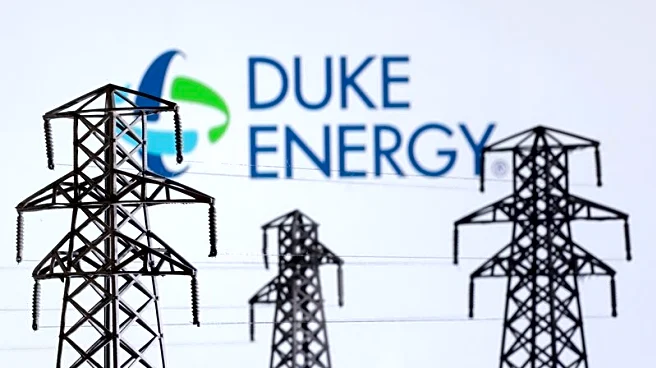What is the story about?
What's Happening?
Duke Energy has announced a new energy plan that includes delaying the retirement of three coal-fired plants in North Carolina, while also reducing solar and wind energy targets. The plan, filed with state regulators, aims to expand natural gas-fired generation and explore nuclear power options to meet growing electricity demand in the Carolinas. The utility plans to increase battery energy storage to 7.9 GW by 2033 and add 9.7 GW of natural gas-fired capacity. The plan has faced criticism from North Carolina Governor Josh Stein, who expressed concerns about the state's clean energy future.
Why It's Important?
The decision to delay coal plant retirements and reduce renewable energy targets could impact the state's efforts to transition to cleaner energy sources. Duke Energy's plan reflects a shift in response to federal policies that incentivize nuclear energy and energy storage while easing restrictions on coal generation. This move may affect electricity rates and the reliability of power supply in the region. Stakeholders, including environmental groups and state officials, are likely to scrutinize the plan's implications for carbon emissions and energy costs.
What's Next?
The North Carolina Utilities Commission will hold hearings on Duke Energy's resource plan next year, with an order expected by December 2026. Duke Energy plans to file a resource plan update with the South Carolina Public Service Commission later this year. The utility's strategy will be closely monitored by state regulators and environmental advocates, who may push for changes to align with clean energy goals.
Beyond the Headlines
Duke Energy's plan highlights the complex interplay between federal energy policies and state-level clean energy initiatives. The utility's focus on natural gas and nuclear power reflects broader industry trends towards balancing economic growth with environmental sustainability. The plan's impact on local communities, particularly those near coal plants, will be an important consideration in future regulatory discussions.
AI Generated Content
Do you find this article useful?















